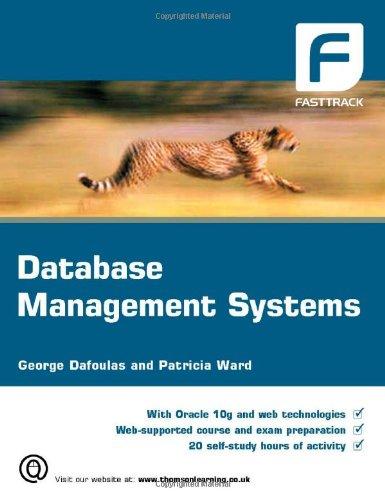Question
C++ Question: we need to get the words/speech from .txt file Steve Jobs delivered a touching and inspiring speech at Stanford's 2005 commencement. The transcript
C++ Question:
we need to get the words/speech from .txt file
Steve Jobs delivered a touching and inspiring speech at Stanford's 2005 commencement. The transcript of this speech is attached at the end of this homework description. In this homework, you are going to write a program to find out all the unique tokens (or words) used in this speech and their corresponding frequencies, where the frequency of a word w is the total number of times that w appears in the speech. You are required to store such frequency information into a vector and then sort these tokens according to frequency. Please feel free to use existing functions such as strtok() or sstream to identify tokens in this implementation.
Specifically, you are required to include the following elements in your program:
Declare a struct TokenFreq that consists of two data members: (1) string value; and (2) int freq; Obviously, an object of this struct will be used to store a specific token and its frequency. For example, the following object word stores the token "dream" and its frequency 100:
TokenFreq word;
word.value="dream";
word.freq=100;
Remember to declare this struct at the beginning of your program and outside any function. A good place would be right after the "using namespace std;" line. This way, all the functions in your program will be able to use this struct to declare variables.
Implement the function vector
Implement the selection sort algorithm to sort a vector
void selectionSort( vector
Implement the insertion sort algorithm to sort a vector
void insertionSort( vector
Implement the void writeToFile( vector
Implement the int main() function to contain the following features: (1) asks the enduser of your program to specify the name of the input file, (2) ) call the getTokenFreq() to identify each unique token and its frequency, (3) call your selection sort and insertion sort functions to sort the vector of TokenFreq objects assembled in (2); and (4) call the WriteToFile() function to print out the sorted vectors in two separate files, one in ascending order and the other in descending order.
Example input and outputs:
Assume that your input file contains the following paragraph: "And no, I'm not a walking C++ dictionary. I do not keep every technical detail in my head at all times. If I did that, I would be a much poorer programmer. I do keep the main points straight in my head most of the time, and I do know where to find the details when I need them. by Bjarne Stroustrup"
After having called the getTokenFreq() function, you should identify the following list of (token, freq) pairs and store them in a vector (note that the order might be different from yours): {'no,': 1, 'and': 1, 'walking': 1, 'be': 1, 'dictionary.': 1, 'Bjarne': 1, 'all': 1, 'need': 1, 'Stroustrup': 1, 'at': 1, 'times.': 1, 'in': 2, 'programmer.': 1, 'where': 1, 'find': 1, 'that,': 1, 'would': 1, 'when': 1, 'detail': 1, 'time,': 1, 'to': 1, 'much': 1, 'details': 1, 'main': 1, 'do': 3, 'head': 2, 'I': 6, 'C++': 1, 'poorer': 1, 'most': 1, 'every': 1, 'a': 2, 'not': 2, "I'm": 1, 'by': 1, 'And': 1, 'did': 1, 'of': 1, 'straight': 1, 'know': 1, 'keep': 2, 'technical': 1, 'points': 1, 'them.': 1, 'the': 3, 'my': 2, 'If': 1}
After having called the selectionSort() function, the sorted vector of token-freq pairs will contain the following information (again, the tokens of the same frequency might appear in different order from yours) : [('no,', 1), ('and', 1), ('walking', 1), ('be', 1), ('dictionary.', 1), ('Bjarne', 1), ('all', 1), ('need', 1), ('Stroustrup', 1), ('at', 1), ('times.', 1), ('programmer.', 1), ('where', 1), ('find', 1), ('that,', 1), ('would', 1), ('when', 1), ('detail', 1), ('time,', 1), ('to', 1), ('much', 1), ('details', 1), ('main', 1), ('C++', 1), ('poorer', 1), ('most', 1), ('every', 1), ("I'm", 1), ('by', 1), ('And', 1), ('did', 1), ('of', 1), ('straight', 1), ('know', 1), ('technical', 1), ('points', 1), ('them.', 1), ('If', 1), ('in', 2), ('head', 2), ('a', 2), ('not', 2), ('keep', 2), ('my', 2), ('do', 3), ('the', 3), ('I', 6)]
Step by Step Solution
There are 3 Steps involved in it
Step: 1

Get Instant Access to Expert-Tailored Solutions
See step-by-step solutions with expert insights and AI powered tools for academic success
Step: 2

Step: 3

Ace Your Homework with AI
Get the answers you need in no time with our AI-driven, step-by-step assistance
Get Started


